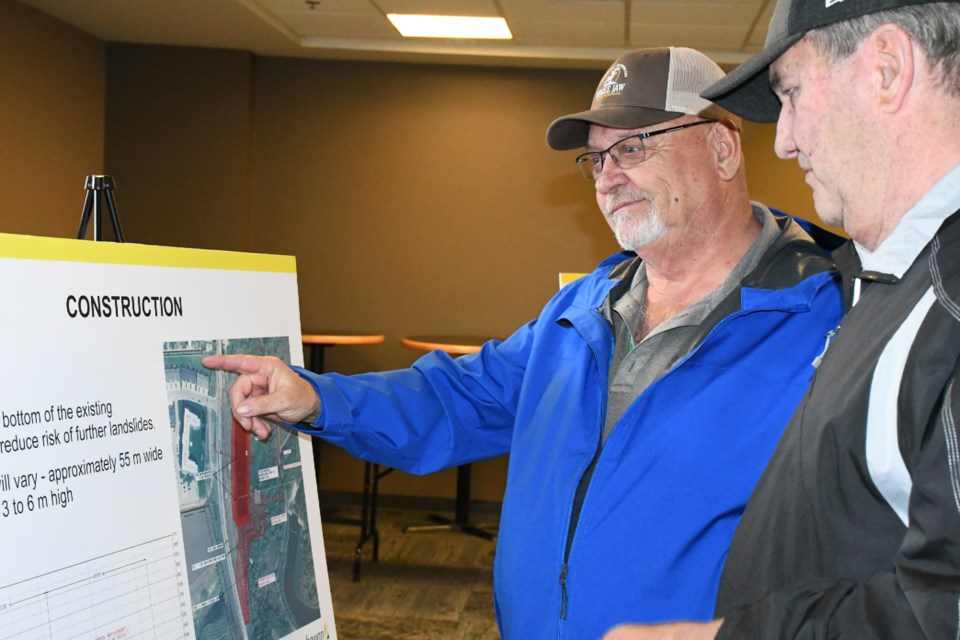MOOSEJAWTODAY.COM — The province will begin repairs to Ninth Avenue Southwest this fall to shore up the sinking road, including using about 60,000 cubic metres — over 21,000 tons — of earth to stop the slope from sliding any further.
A past landslide caused significant issues for the road — also known as Highway 363 — near Wakamow Valley, while the Ministry of Highways has repaired that stretch several times over the years. The province has now decided to install a berm at the bottom of the embankment to halt its deterioration.
The berm will be roughly 55 metres wide by 200 metres long and three to six metres high, depending upon the location and grading. It will add weight to the bottom of the slope to stop it from sliding.
The ministry plans to start construction this fall on the berm — it will tender the project this summer — and will repair and rebuild the road in 2025.
To help residents and road users better understand the project, the ministry held an open house at the Events Centre on April 30, with government and heritage officials on hand to answer questions.
Slope instability and slumping are the main issues plaguing the road, and while the province wants to address these problems, highway officials realized that Aboriginal artifacts were likely nearby, said Steve Shaheen, manager of stakeholder relations.
So, last fall, the ministry brought in heritage experts, who conducted a preliminary survey of the area — fields west of the Seventh Avenue Southwest bridge and adjacent to Valleyview Drive and Ninth Avenue Southwest — and performed shovel testing.
Those brief archaeological digs found bone and stone tools, pre-contact pottery and historic or contemporary items like railroad spikes.
“Going forward, they’ll be out there (again) this summer. And once they give the OK, then we can begin construction,” Shaheen said.
It’s not unusual to find artifacts during road construction nor to have to follow certain procedures before pursuing these projects, as the ministry always performs testing before any initiative, he continued.
For example, the province discovered archaeological artifacts in 2016 while twinning Highway 7 west of Saskatoon. Archaeologists spent considerable time searching the area and recovering items before turning the site over to the ministry for project completion.
The main challenge with Ninth Avenue Southwest is the road slipping down the hill, and the ministry wants to prevent that so the highway isn’t completely lost, said Shaheen. The berm at the bottom should prevent that sloping from re-occurring.
“We need to get through Wakamow Valley. We’re being really respectful … to the sensitive nature there. So, they (crews) will need to get their machines through to tackle this project,” he continued.
“But … we’re doing our best to mitigate the disturbance to the park. And then once all is done, we’ll ensure we get back and repair and reseed and replant trees as would be required.”
The ministry takes these projects seriously and goes through several processes to ensure it meets environmental regulations, while it also conducts additional heritage work so it does not disturb grounds that Aboriginal people may consider sacred, Shaheen said.
However, during any project, crews are never sure what they may find, so after discovering something, they pause and ensure they meet all regulations in a safe and respectful process, he continued.
So far, the government’s heritage branch has not found any Aboriginal gravesites near the berm area or beside the highway despite allegations of their presence, added Shaheen.
Meanwhile, it’s not surprising that they’ve found artifacts, considering that research has shown that certain places in the valley were important to First Nations people.
Visit the Ministry of Highways' website for more information.



